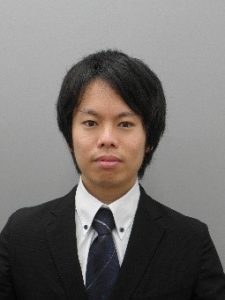
Prof. Hyoungseop Kim
Title: Image Registration Based Computer Aided Diagnosis
Bio:
Hyoungseop Kim received his B.A. degree in electrical engineering from Kyushu Institute of Technology in 1994, the Masters and Ph.D. degree from Kyushu Institute of Technology in 1996 and 2001, respectively. He is a professor in the department of control engineering at Kyushu Institute of Technology. His research interests are focused on medical application of image analysis. He is currently working on automatic segmentation of multi-organ CT image, and temporal subtraction of thoracic MDCT image sets.
Abstract:
Computer Aided Diagnosis (CAD) attracted attention for the purpose of alleviating the burden on interpreting doctors and improving diagnostic accuracy.
The temporal subtraction technique is proposed as a CAD tool. The temporal subtraction image is obtained by subtraction of a previous image from a current one and can be used for enhancing the interval changes on medical images by removing most of normal structures such as blood vessels, ribs etc. To obtain a subtraction images with high quality, it is necessary to develop a nonlinear geometric image warping technique for reduction of misregistration artifacts. We have developed some nonrigid image warping techniques and perform it to the medical image sets which is obtained different time series of same subject. In this lecture, I introduce some image registration techniques and its application to detect abnormal shadows on CT images.
A/ Prof. Masuhiro Nitta
Title: Brain-wave Analysis via Distribution-based Frequency Estimator
Bio:
Masuhiro Nitta received his bachelor’s degree from Kyoto Institute of Technology in 2002, and his master’s and doctoral degrees from Nara Institute of Science and Technology in 2004 and 2007, respectively. He was an assistant professor at Tokyo University of Science from 2007 to 2012. He is an assistant professor at Kyushu Institute of Technology since 2012. He received a best paper award from SICE Japan in 2007. His research interests are blind signal processing and application of frequency estimation.
Abstract:
Brain-wave (electroencephalogram) analysis draws a great deal of interest in robotics fields due to development a brain-machine interface. Alpha, beta and gamma waves are well known brain-wave which categorized by the frequency bandwidth. In these waves, because the alpha wave arises from closed eyes and relaxed situation, it is utilized to assist in the diagnosis of sleep disorders. In order to diagnosis the appearance of the alpha wave, it is of importance a real-time frequency estimation technique. In this presentation, we show a waveform of the maintenance of wakefulness test (MWT) and analyze its containing frequency in real-time. To this end, we introduce a notion of distribution which uses the characteristic of Gaussian function to perform real-time frequency estimation. Since a Gaussian function is one of the infinitely differentiable functions, we replace the derivative of noisy brain-wave by the derivative of Gaussian function. By using this technique, we are able to estimate the frequency with high accuracy from merely 20 points of data. Comparing the conventional short-time FFT, we highlight the advantage of the proposed frequency estimator.
 A/ Prof. Yuya Nishida
A/ Prof. Yuya Nishida
Title: Ultra-wide area bathymetric survey by autonomous underwater vehicles with support of an unmanned surface vehicle
Bio:
Yuya received a Ph.D. in engineering from the Kyushu Institute of Technology in 2011. After spending one year at the university, he continued research related to underwater vehicle until he rejoined the Kyushu Institute of Technology in 2015 in his current role. He has working on development of autonomous underwater vehicles and underwater instruments for survey the marine resources. His research interests focus on the automation of marine survey and inspection conducted by humans.
Abstract:
Non-profit organization XPRIZE foundation located at USA has organized Shell Ocean Discovery XPRIZE which advance deep sea technologies for autonomous, fast and high-resolution ocean exploration. In the competition, unmanned vehicle should survey the seafloor at 2,000 m depth over 100 square kilometers in round 1, and seafloor at 4,000 m depth over 250 square kilometers in round 2 with horizontal resolution of 5 m or more and vertical resolution of 0.5 m or more. The survey site is located about 15 miles away from the port, unmanned vehicle should move to the site before seafloor survey without vessel support. For the competition, our team developed survey system using tow autonomous underwater vehicles which measure bathymetry, and an unmanned surface vehicle which tracks the vehicles and transmits them navigation data to control room. I introduce architecture of the survey system and results in the competition.

